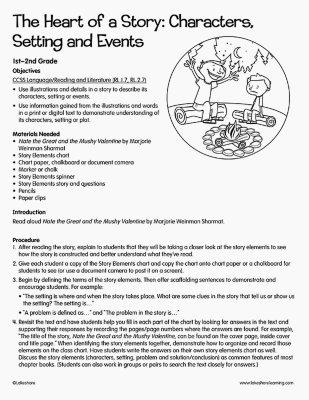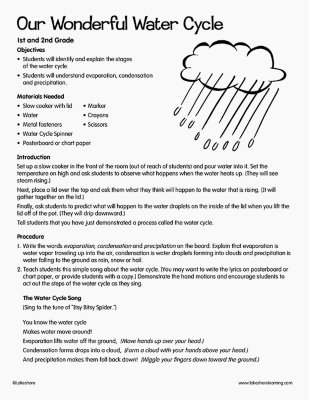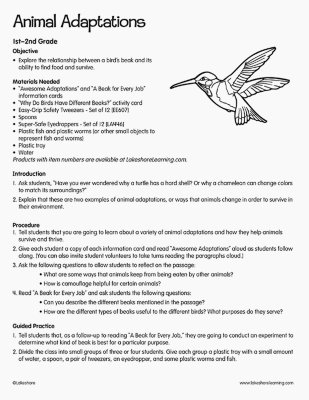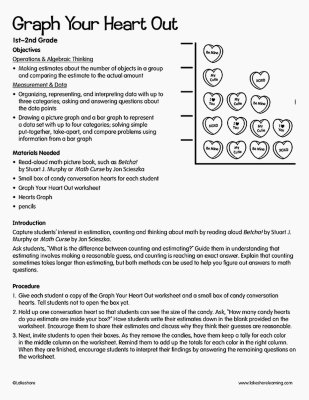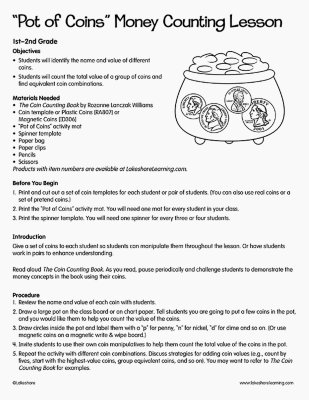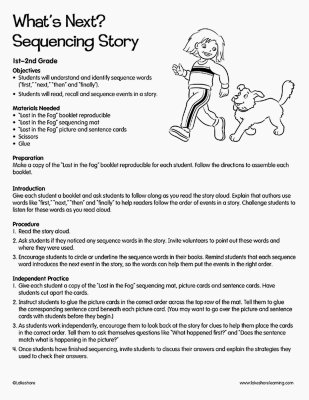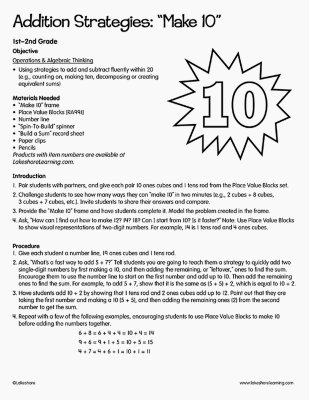Narrow by Grade
- Infant (0)
- Toddler (0)
- Preschool (0)
- Pre-K (0)
- Kindergarten (0)
- 1st (6)
- 2nd (7)
- 3rd (0)
- 4th (0)
- 5th (0)
- 6th & Up (0)
Grade
Narrow by Age
- 0-18m (0)
- 18-36m (0)
- 3 yrs. (0)
- 4 yrs. (5)
- 5 yrs. (10)
- 6 yrs. (9)
- 7 yrs. (7)
- 8 yrs. (4)
- 9 yrs. (6)
- 10 yrs. (0)
- 11 yrs. & Up (0)
Age 7 yrs.
0 results for "seating/" , here are results for "setting"
Filters
Clear All
The Heart of a Story: Characters, Setting and Events
1st Grade - 2nd Grade
Objectives Using illustrations and details in a story to describe its characters, setting or events Using information from illustrations and words to demonstrate understanding of characters, setting or plot Materials Needed Nate the Great and the Mushy Valentine by Marjorie Weinman Sharmat Story Elements chart Chart paper, chalkboard or document camera Marker or chalk Story Elements spinner Story Elements story and questions Pencils Paper clips Introduction Read aloud Nate the Great and the Mushy Valentine by Marjorie Weinman Sharmat.
View Lesson PlanOur Wonderful Water Cycle
1st Grade - 2nd Grade
Objectives Students will identify and explain the stages of the water cycle. Students will understand evaporation, condensation and precipitation. Materials Needed Slow cooker with lid Water Posterboard or chart paper Marker Water Cycle Spinner Crayons Scissors Metal fasteners Introduction Set up a slow cooker in the front of the room (out of reach of students) and pour water into it. Set the temperature on high and ask students to observe what happens when the water heats up. (They will see steam rising.) Next, place a lid over the top and ask them what they think will happen to the water that is rising. (It will gather together on the lid.) Finally, ask students to predict what will happen to the water droplets on the inside of the lid when you lift the lid off of the pot. (They will drip downward.) Tell students that you have just demonstrated a process called the water cycle.
View Lesson PlanAnimal Adaptations
1st Grade - 2nd Grade
Objective Explore the relationship between a bird’s beak and its ability to find food and survive. Materials Needed “Awesome Adaptations” and “A Beak for Every Job” information cards “Why Do Birds Have Different Beaks?” activity card Easy-Grip Safety Tweezers - Set of 12 Spoons Super-Safe Eyedroppers - Set of 12 Plastic fish and plastic worms (or other small objects to represent fish and worms) Plastic tray Water Introduction Ask students, “Have you ever wondered why a turtle has a hard shell? Or why a chameleon can change colors to match its surroundings?” Explain that these are two examples of animal adaptations, or ways that animals change in order to survive in their environment.
View Lesson PlanGraph Your Heart Out
1st Grade - 2nd Grade
Objectives Operations & Algebraic Thinking Making estimates about the number of objects in a group and comparing the estimate to the actual amount Measurement & Data Organizing, representing, and interpreting data with up to three categories; asking and answering questions about the data points Drawing a picture graph and a bar graph to represent a data set with up to four categories; solving simple put-together, take-apart, and compare problems using information from a bar graph Materials Needed Read-aloud math picture book, such as Betcha! by Stuart J. Murphy or Math Curse by Jon Scieszka Small box of candy conversation hearts for each student Graph Your Heart Out worksheet Hearts Graph pencils Introduction Capture students’ interest in estimation, counting and thinking about math by reading aloud Betcha! by Stuart J. Murphy or Math Curse by Jon Scieszka. Ask students, “What is the difference between counting and estimating?” Guide them in understanding that estimating involves making a reasonable guess, and counting is reaching an exact answer. Explain that counting sometimes takes longer than estimating, but both methods can be used to help you figure out answers to math questions.
View Lesson Plan"Pot of Coins" Money Counting Lesson
2nd Grade
Objectives Students will identify the name and value of different coins. Students will count the total value of a group of coins and find equivalent coin combinations. Materials Needed The Coin Counting Book by Rozanne Lanczak Williams Coin template or Plastic Coins or Magnetic Coins “Pot of Coins” activity mat Spinner template Paper bag Paper clips Pencils Scissors Before You Begin Print and cut out a set of coin templates for each student or pair of students. (You can also use real coins or a set of pretend coins.) Print the “Pot of Coins” activity mat. You will need one mat for every student in your class. Print the spinner template. You will need one spinner for every three or four students. Introduction Give a set of coins to each student so students can manipulate them throughout the lesson. Or have students work in pairs to enhance understanding. Read aloud The Coin Counting Book. As you read, pause periodically and challenge students to demonstrate the money concepts in the book using their coins.
View Lesson PlanWhat’s Next? Sequencing Story
1st Grade - 2nd Grade
Objectives Reading Literature Retelling stories and demonstrating understanding of the central message or lesson Describing characters, settings, and major events in a story, using key details Understanding and identifying sequence words (e.g., “first,” “next,” “then,” “finally”) Materials Needed Lost in the Fog booklet reproducible Lost in the Fog sequencing mat Lost in the Fog picture and sentence cards Best-Buy Scissors Lakeshore Glue Sticks Pencils Preparation Make a copy of the Lost in the Fog booklet reproducible, sequencing mat, picture cards and sentence cards for each student. Follow the directions to assemble each booklet. Introduction Give each student a booklet and ask students to follow along as you read the story aloud. Explain that authors use words like “first,” “next,” “then” and “finally” to help readers follow the order of events in a story. Challenge students to listen for these words as you read aloud.
View Lesson PlanAddition Strategies: "Make 10"
1st Grade - 2nd Grade
Objective Operations & Algebraic Thinking Using strategies to add and subtract fluently within 20 (e.g., counting on, making ten, decomposing or creating equivalent sums) Materials Needed “Make 10” frame Place Value Blocks Number line “Spin-To-Build” spinner “Build a Sum” record sheet Paper clips Pencils Introduction Pair students with partners, and give each pair 10 ones cubes and 1 tens rod from the Place Value Blocks set. Challenge students to see how many ways they can “make 10” in two minutes (e.g., 2 cubes + 8 cubes, 3 cubes + 7 cubes, etc.). Invite students to share their answers and compare. Provide the “Make 10” frame and have students complete it. Model the problem created in the frame. Ask, “How can I find out how to make 12? 14? 18? Can I start from 10? Is it faster?” Note: Use Place Value Blocks to show visual representations of two-digit numbers. For example, 14 is 1 tens rod and 4 ones cubes.
View Lesson Plan